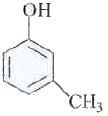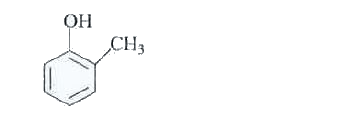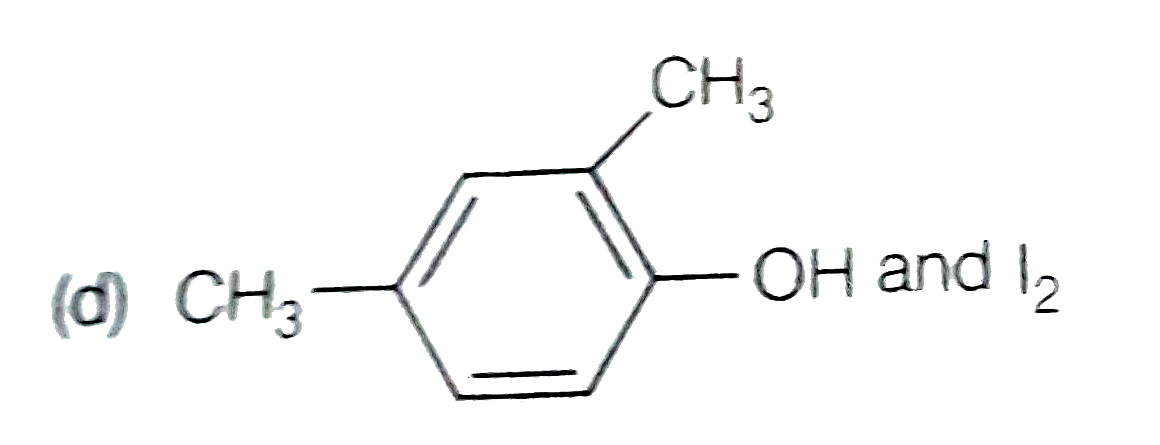Compound (A) C4H10O, is found to be soluble in sulphuric acid . (A) does not react with sodium or potassium permanganate. When (A) is heated with excess of HI, it is converted into a single alkyl halide. What is (A) ?
To identify compound (A) with the molecular formula C₄H₁₀O, we will analyze the information given in the question step by step.
Step 1: Analyze the Molecular Formula
The molecular formula of compound (A) is C₄H₁₀O. This indicates that it could potentially be an alcohol or an ether.
Hint: Look for functional groups that match the molecular formula.
Step 2: Solubility in Sulfuric Acid
The problem states that compound (A) is soluble in concentrated sulfuric acid (H₂SO₄). Generally, ethers are soluble in sulfuric acid, while alcohols can also be soluble but may react differently.
Hint: Consider the behavior of ethers and alcohols in acidic environments.
Step 3: Reaction with Sodium and Potassium Permanganate
The question mentions that compound (A) does not react with sodium or potassium permanganate. This is a key point because alcohols typically react with these reagents (oxidizing agents), while ethers do not. This suggests that compound (A) is likely an ether.
Hint: Recall the reactivity of alcohols versus ethers with oxidizing agents.
Step 4: Heating with Excess HI
When compound (A) is heated with excess hydroiodic acid (HI), it is converted into a single alkyl halide. This indicates that compound (A) is likely a symmetrical ether, as symmetrical ethers will yield only one type of alkyl halide when cleaved by HI.
Hint: Think about how ethers react with hydrohalic acids.
Step 5: Identify the Structure of Compound (A)
Given the molecular formula C₄H₁₀O and the information that it is an ether, we can deduce that the structure of compound (A) is likely diethyl ether, which can be represented as CH₃CH₂OCH₂CH₃.
Hint: Draw the possible structures for ethers with the given molecular formula to confirm.
Conclusion
Based on the analysis, compound (A) is diethyl ether (CH₃CH₂OCH₂CH₃).
Final Answer: Compound (A) is diethyl ether (C₂H₅)₂O.
The molecular formula of compound (A) is C₄H₁₀O. This indicates that it could potentially be an alcohol or an ether.
The problem states that compound (A) is soluble in concentrated sulfuric acid (H₂SO₄). Generally, ethers are soluble in sulfuric acid, while alcohols can also be soluble but may react differently.
The question mentions that compound (A) does not react with sodium or potassium permanganate. This is a key point because alcohols typically react with these reagents (oxidizing agents), while ethers do not. This suggests that compound (A) is likely an ether.
When compound (A) is heated with excess hydroiodic acid (HI), it is converted into a single alkyl halide. This indicates that compound (A) is likely a symmetrical ether, as symmetrical ethers will yield only one type of alkyl halide when cleaved by HI.
Given the molecular formula C₄H₁₀O and the information that it is an ether, we can deduce that the structure of compound (A) is likely diethyl ether, which can be represented as CH₃CH₂OCH₂CH₃.
Based on the analysis, compound (A) is diethyl ether (CH₃CH₂OCH₂CH₃).
Similar Questions
Knowledge Check
An organic compound of molecular formula C4H10O does not react with sodium. With excess of HI, it gives only one type of alkyl halide. The compound is
AC2H5IOC2H5BCH3C∣OCH3HCH3CCH3CH2CH2OCH2DCH3CH2CH2OHA compound 'A' (C7H8O) is insoluble in water, dilute Hcland aqueous NaHCO3 but soluble in dilute NaOH. When Ais treated with Br2−H2O, it is converted into a compound of formula C7H5Obr3. Compound A is :
A B
B C
C D
D
A compound (A) C5H10Cl2 on hydrolysis gives C5H10O which reacts with NH2OH, forms iodoform but does not give Fehling test (A) is :
AH3C−CI∣C∣CI−CH2CH2CH3BCH3CH2−CI∣C∣CI−CH2CH3CCI∣C∣CIHCH2CH2CH2CH3DCH3CH2CI∣CH−CI∣CHCH3
A compound X(C5H10O) reacts with 2,4-DNP but does not give silver mirror test and Iodoform reaction. The possible structure for X is :
View SolutionAn organic compound A (C2H6O) reacts with sodium to form a compound B with the evolution of H2 and gives a yellow compound C on reacting with iodine and NaOH. When heated with conc. H2SO4 at 413 K, it gives a compound D (C4H10O) which on reaction wiht conc. HI at 373 K gives compound E. The compound D is also obtained when B is heated with E. Idntify the compounds A,B,C,D and E write the equations for the reaction involved.
View SolutionState with balanced equation what happens when ?
(a) Potassium ferrocyanide is heated with conc.H2SO4.
(b) A mixture of potassium chlorate, oxalic acid and sulphuric acid is heated.
(c) Sodium chlorate reacts with sulphur dioxide.
(d) Chlorine gas is passed into water saturated with hydorgen sulphide.
(e) Hydrogen sulphide is passed through sodium bisulphite solution.
View SolutionCompound A,C8H10O, is found to react with NaOI (produced by reacting Y with NaOH) and yields a yellow precipitate with characteristic smell.
A and Y are respectively
(a)
(b)
(c)
(d)
View SolutionAn organic compound having molecular formula C3H6O does not react with 2, 4-dinitrophenyl hydrazine and does not react with Na metal. The compound is expected to be :
View Solution
